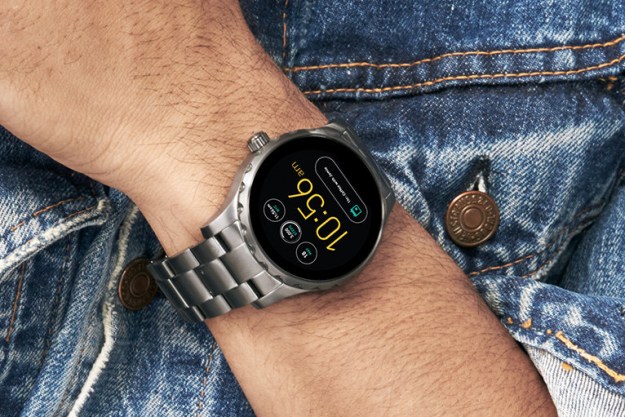Sony is encouraging its employees to create new products for its “First Flight” crowdfunding platform, which already features the FES E-Ink watch, the MESH wireless tag for automating smart-home functions, and HUIS home remote control that can be programmed to take the place of other remote controls in your home.
And from this week a new piece of kit joins the club, the Wena Wrist, essentially a dumb watch with the smart stuff built into the band.
Designed in collaboration with Japanese watch specialist Citizen, the stylish-looking Wena (which stands for “wear electronics naturally”) offers seven-color LEDs and vibrations for notifications, an NFC chip compatible with FeliCa (Japan’s contactless payment standard), fitness tracking features, and water resistance to a depth of around 30 meters.
The company is looking for 10 million yen (about $82,500) to fund the project, and if successful should see two models launch: the Three Hands sporting a regular watch face, and the Chronograph featuring three separate dials for hours, minutes, and seconds.
Both models come in silver and black, with prices starting at 39,800 yen ($330) for the silver Three Hands and topping out at 69,800 yen ($580) for the black Chronograph.
The Three Hands model weighs 55g while the Chronograph tips the scales at 72.5g. The band, meanwhile, weighs 79.5g, so you could be looking at a total weight of 152g (for comparison, the heaviest Apple Watch comes in at 125g). At least you’ll notice if it slips off.
The hands on both models should keep turning for at least three years, though the band, which houses all the smart tech, is likely to need charging (via a cradle) around once a week.
Notably, the Wena doesn’t appear to function with any of Sony’s phones – tech specs on the device’s page show that the initial design has it pairing only with iPhones running iOS 8 and above.
Sony’s Wena device is the tech firm’s take on creating interchangeable smart accessories for high-tech timepieces, and could offer a great solution for those who prefer analog watches but like the idea of including some smart features – the T-Band from San Francisco-based Kairos runs along the same lines. You could also retain the analog part while upgrading the band as newer versions hit the market.
If all goes to plan and interested folks stump up the money to fund the project, the device could start shipping as early as March next year. We’ll keep you posted.


